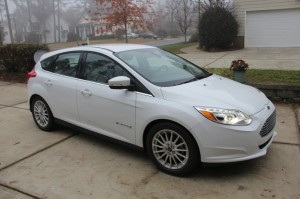
Our Ford Focus Electric
There are many days when I’m driving my electric vehicle (EV) that I’m focused on economy. I will try hard to accelerate smoothly, drive at the speed limit (or sometimes more slowly), and brake as gradually as I can. The reward is high efficiency driving, saving as much money as I can.
Yesterday was not one of those days! Having many different events to attend, stretched from one end of the city to the other, I decided to flex my EV’s muscles. On our Time Of Use (TOU) plan, weekend electricity is super-cheap, so why not have a little fun?
As I drove down 401 yesterday, I sensed the guy behind me was becoming annoyed with my efficient driving. He shifted over a lane in an attempt to pass me. Not only are EVs cheap to drive, they also have a ton of torque just ready and waiting. I let the guy pass but caught up with him at the next light, where we both were lined up.
You think my EV is slow? I mentally challenged him. Watch this!
Continue reading →
